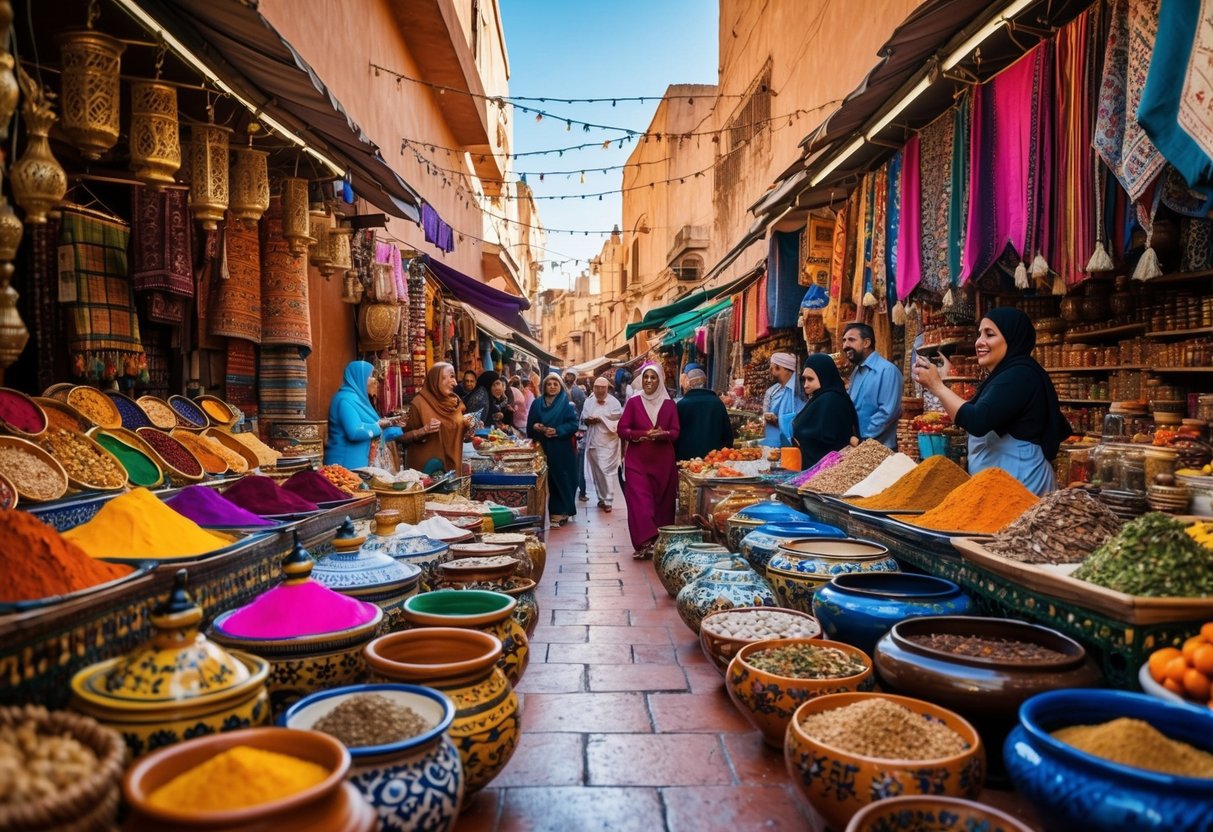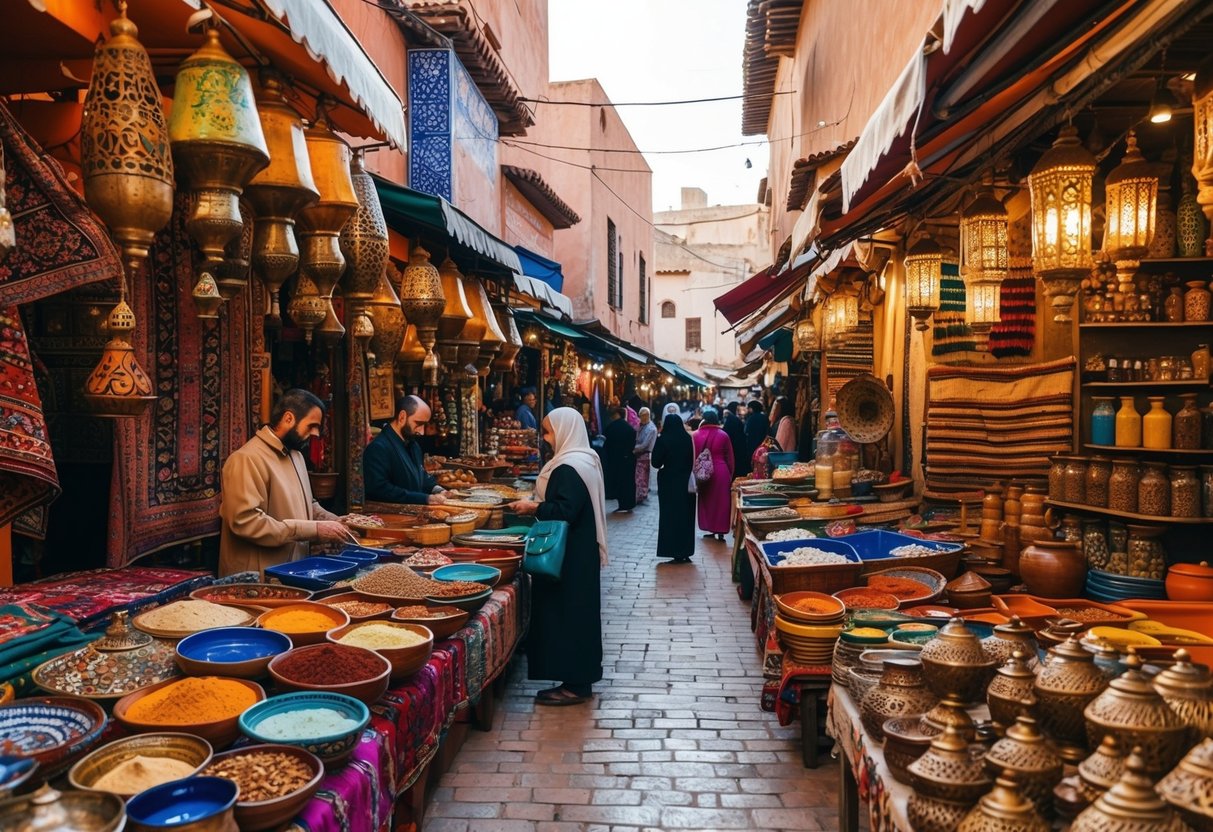
Spice Souk: A Symphony of Flavors
The Spice Souk is an aromatic journey through Morocco’s culinary landscape. Piles of spices like saffron, cumin, cinnamon, and turmeric create a visual and sensory feast. These spices are essential ingredients in Moroccan cuisine, used in tagines, couscous, and other dishes.
Market vendors often provide samples and specific cooking tips to customers. Packaging varies from small bags to decorative jars, perfect for gifts. Freshness and quality are paramount; the colors and aromas testify to their authenticity. Exploring the Spice Souk offers a rich taste of Morocco’s gastronomic heritage.
A Journey Through Time: Historical Highlights

Morocco’s souks are more than just bustling marketplaces—they are living testaments to the country’s rich history and cultural heritage. The architectural marvels and preserved traditions found within the Medina showcase the era of the Almoravids and Morocco’s recognition as a UNESCO World Heritage site.
The Almoravids and Medina
The Almoravids, a Berber dynasty that emerged in the 11th century, played a pivotal role in shaping the Medinas of Morocco. Their influence can be seen in the architecture, characterized by simplicity and functionality. The Medina of Marrakech, established during this period, is a prime example of their legacy.
Visitors to the Medina can still see the original layout, which includes narrow winding streets and high, imposing walls aimed at fortifying the city. One of the most notable landmarks from this era is the Koutoubia Mosque, the largest in Marrakech. Built under Almoravid rule, the mosque showcases their architectural prowess and commitment to Islamic principles.
UNESCO World Heritage: Celebrating Culture
The Medina of Marrakech became a UNESCO World Heritage site in 1985, emphasizing its historical and cultural significance. This designation aims to preserve the unique urban fabric and traditional way of life that have been maintained for centuries. Walking through the souks, shoppers encounter age-old practices, such as artisans crafting goods by hand.
UNESCO’s recognition helps protect these traditions and ensures that future generations can experience these historical treasures. Beyond Marrakech, other Moroccan cities like Fez and Meknes also boast Medinas that are UNESCO-designated, each offering a unique glimpse into Morocco’s multicultural and historical depth.
Negotiation and Etiquette: Mastering the Art of Bargaining
Bargaining in Moroccan souks is an essential skill for securing good deals and enjoying a richer cultural experience. Here are important tips for haggling in Souk El Attarine and understanding the necessary cultural nuances to show respect during trade.
Haggling in Souk El Attarine
In Souk El Attarine, vendors expect buyers to haggle. Starting with an initial price significantly higher than what they expect, it’s crucial to counteroffer. A common strategy is to offer about 50% of the asking price, then gradually move toward a mutually agreeable price. Being patient and friendly while negotiating can lead to better deals.
Making eye contact, showing genuine interest, and commenting positively on the item’s quality or craftsmanship can create rapport. Buyers should never seem too eager to buy, as this can weaken their bargaining position. Walking away can sometimes lead vendors to lower the price further.
Understanding the market value of items by observing other transactions or asking locals can also give buyers an edge. Haggling is not just about price reduction but a way to connect with the seller and appreciate the art of trade.